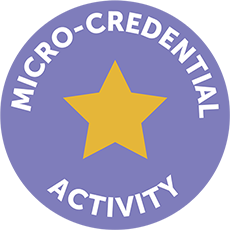Use Case and Success Equation Template
Overview
In this activity you will select your district’s use case. Your use case needs to provide a quick win. What’s a quick win? It’s an achievable goal that you can use to demonstrate success and build upon. Your use case needs to provide a quick win that adds clear value.
Seek input from your stakeholders as you create your use case. This will keep them actively engaged in the process because they understand the benefit.
- A focused use case will have all three of these characteristics:
- Quick win
- Clear value
- Engaged stakeholders

Use Case Examples
Review the sample use case, challenge statement and solution statements below.
| USE CASES | ||
|---|---|---|
| Users and Focus Area: Who are the users and focus of this use case? | Topic: Is the use case specific to a subject or topic area? | Technology Areas: What data or systems are required for the use case? |
| Essential Questions: What essential questions is the use case seeking to answer? | ||
⬇️
| USE CASES | ||
|---|---|---|
| Users and Focus Area: Users: Teachers Focus Area: 2nd grade and 3rd grade | Topic: Math Assessments | Technology Areas: SIS: Skyward Tools: iReady, JumpRope |
| Essential Questions: What essential questions is the use case seeking to solve? How can our district maximize and integrate multiple math tools? What math tools help teachers assess the strengths and needs of their students? | ||
| CHALLENGE STATEMENT | SOLUTION STATEMENT |
|---|---|
| Teachers do not have the ability to understand student progress and performance across math learning applications, or the ability to identify opportunities to align instruction to high-need content and competency areas. | Demonstrate the value of safe, secure, and systematic integration of data across learning applications by creating a classroom-level math tool for real-time evaluation of student progress and impact of interventions. |
IGNITE Questions
- How will meeting this need support the district’s mission?
- How will meeting this need aid the district in meeting its specific goals?
- Who will benefit from this need being achieved and how?
- Is this need identified from an equity-centered and asset-based approach or has the need been identified through deficit thinking?
- How will success be measured?
- How will an equity-centered approach be built in and maintained through development, implementation, and monitoring?


Success Equation
Craft your success equation by taking your Goals, or the changes in behavior or condition required to achieve impact, and measurement of progress to achieve your desired outcome. See the examples below, then locate the “Use Case and Success Equation Template” in your resource folder.
| GOAL A | MEASURE A | OUTCOME A | ||
| Changes in behavior or condition required to achieve impact | + | How do we measure progress against our outcomes? | = |
| GOAL A | MEASURE A | OUTCOME A | ||
| Change in condition: align classroom assessments with third-party assessments; want to bring together all the various data points to provide different context for decision-making | + | The number of aligned and integrated assessments and greater understanding of distinct data points | = | Comprehensive math assessments to support 2nd and 3rd grade instruction |
| GOAL B | MEASURE B | OUTCOME B | ||
| Changes in behavior or condition required to achieve impact | + | How do we measure progress against our outcomes? | = |
| GOAL B | MEASURE A | OUTCOME B | ||
| Change in behavior: Get teachers to consider all sources of data (e.g. individual standards, achievement, etc.) versus just their gradebook scores or assessments | + | Standards attainment/decrease in students reaching 3rd grade with gaps | = | Improve mathematics instruction across 2nd and 3rd grade |